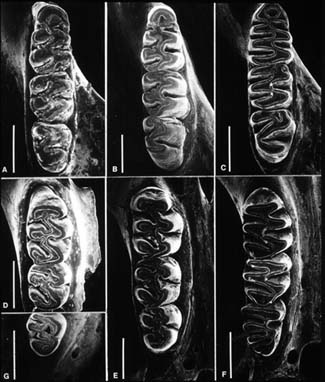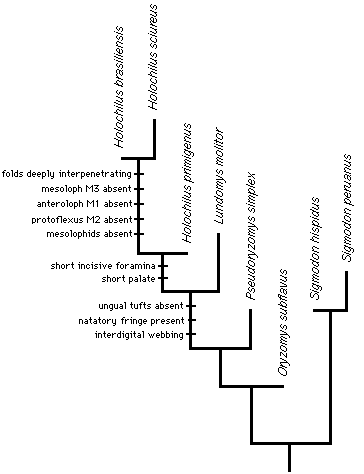A new species of Holochilus (Rodentia: Sigmodontinae) from the middle Pleistocene of Bolivia and its phylogenetic significance. Steppan, S.J. 1996. Journal of Vertebrate Paleontology. 16(3):522-530. |
A new species of Holochilus (Rodentia: Sigmodontinae) from the middle Pleistocene of Bolivia and its phylogenetic significance. Steppan, S.J. 1996. Journal of Vertebrate Paleontology. 16(3):522-530. |
A series of mandibles and maxillae from the Ensenadan (middle Pleistocene) sediments of the Tarija Basin of Bolivia are assigned to Holochilus primigenus, n. sp.. This marsh-rat of the subfamily Sigmodontinae (="South American cricetid") is one of very few extinct muroids known from South America. A cladistic analysis indicates that the new species is the sister-taxon to living species of Holochilus and possesses a morphology transitional between extant Holochilus and their closest living relative, Lundomys. The molar occlusal morphology of H. primigenus is virtually indistinguishable from extant Lundomys, but synapomorphic characters of the mandible and palate unite it with Holochilus. Holochilus primigenus is a potential ancestor to its living congeners since it possesses no known autapomorphies The explicit hypothesis of phylogenetic placement for this new species combined with its presumed geologic age of 0.7-1.0 mya may provide a calibration point to develop divergence age estimates for the highly diverse sigmodontines.

Figure 1. Molars of Holochilus primigenus, Lundomys, and Holochilus brasiliensis.

Figure 3. Most parsimonious tree wherein the oryzomyines are monophyletic.